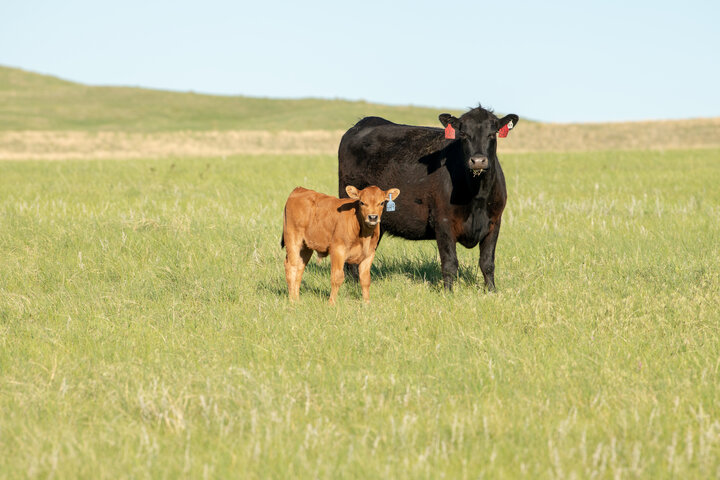A cow must conceive approximately 85 days after calving to maintain a yearly calving interval.
Calves born in the first 30 days of the calving season have many advantages over later born calves. Early born calves weigh more at weaning and replacement heifers born early in the calving season are more likely to conceive early in the breeding season as a yearling.
Research has shown two-year-old heifers that calve early in the calving season are more productive throughout their lives than later-calving herd mates.
In a fixed-breeding season, late-calving cows are less likely to become pregnant in the subsequent breeding season than early-calving cows. Cows calving early will have more opportunity to have multiple estrous cycles during the breeding season and therefore be more likely to conceive. The economic loss associated with later-born calves and the higher tendency of late-calving cows to not conceive highlights the benefits of inducing estrus earlier than may naturally occur for later-calving cows.
Progesterone use
Research has shown the use of a progesterone controlled internal drug releasing device (CIDR) for 7 days can shorten the time it takes for cows to come into heat after calving. The use of a CIDR can induce ovulation and initiate cycling earlier than may occur naturally, in cows that are at least 20 days post calving. By initiating estrus earlier, cows are more likely to conceive earlier in the breeding season. This initial estrus induced through the use of a CIDR is fertile and cows can be bred either by artificial insemination or through the use of natural service.
Dr. Rick Funston (UNL Reproductive Physiologist) has worked with producers interested in advancing the subsequent breeding date in later calving cows. In one group of approximately 55 cows, pregnancy diagnosis with ultrasonography estimated an average advance in calving date of 30 days by using a 7-day CIDR protocol with prostaglandin upon CIDR removal and immediate bull exposure.
CIDR device use with natural service
Many producers associate the use of a CIDR device with estrus synchrony for the purpose of artificial insemination. However, a CIDR device may also be used effectively with natural service.
The CIDR label indicates that it is "for synchronization of estrus in suckled beef cows and replacement beef and dairy heifers, advancement of first postpartum estrus in suckled beef cows, and advancement of first pubertal estrus in beef heifers."
Cow-calf producers who utilize natural service may benefit from identifying non-cycling cows that are at least 20 days post calving and utilizing a 7-day CIDR protocol to initiate estrus that coincides with the start of the breeding season.
For more information on the use of an estrus synchronization protocol utilizing a CIDR with natural service, please see the Nebraska Extension Circular EC283 Synchronizing Estrus in Beef Cattle (PDF 1.18MB).
Topics covered:
Reproduction & genetics, Artificial insemination & estrus synchronization

